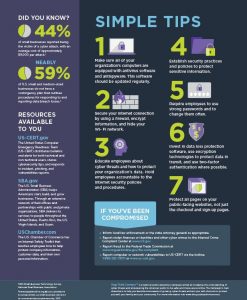Patches are essential for your cyber security, your performance, and reliability. All platforms release patches with new features and increased security. With as many platforms as the average small business employs, patches can be a lot to keep up with, but they are crucial to maintaining an efficiency and secure network.
There are two problems with patches – sometimes their application in a system is delayed by the IT department, and othertimes they are not applied at all. When an IT department delays a patch, they usually do so to test the patch and make sure it doesn’t break something else. Responsible decision, as long as it’s tested within the first 48 hours of a patc’ deployment. Other times, the patch never gets applied because of negligence. This opens your organization’s network up to cyber attacks.
Which patches should you be sure not to neglect? In a perfect world, all of them, but this list should be your priority:
Applications:
- Adobe Flash
- Adobe Reader
- Java
- Microsoft Office
Browsers:
- Chrome
- Firefox
- Internet Explorer
- Safari
- Opera
Operating Systems:
- Apple OSX
- Microsoft Windows
- Microsoft Server Operating System
- All other operating systems you may use
Infrastructure Devices:
- Routers
- Switches
- Firewalls
Why should you make these patches a priority? Because hackers will exploit these first because the patches are difficult to apply and less likely to be patched. Remember, once a patch is rolled out, it won’t do you any good until it’s applied to your organization. Because hackers are ready and waiting to take advantage of lacking patches, patches are often distributed by platforms like Microsoft at unpredictable times. Having the right strategy in place for patch maintenance is essential to keeping your organization up to date.
Need some simple tricks to increase your organization’s security?
[one_third] No Fields Found.
